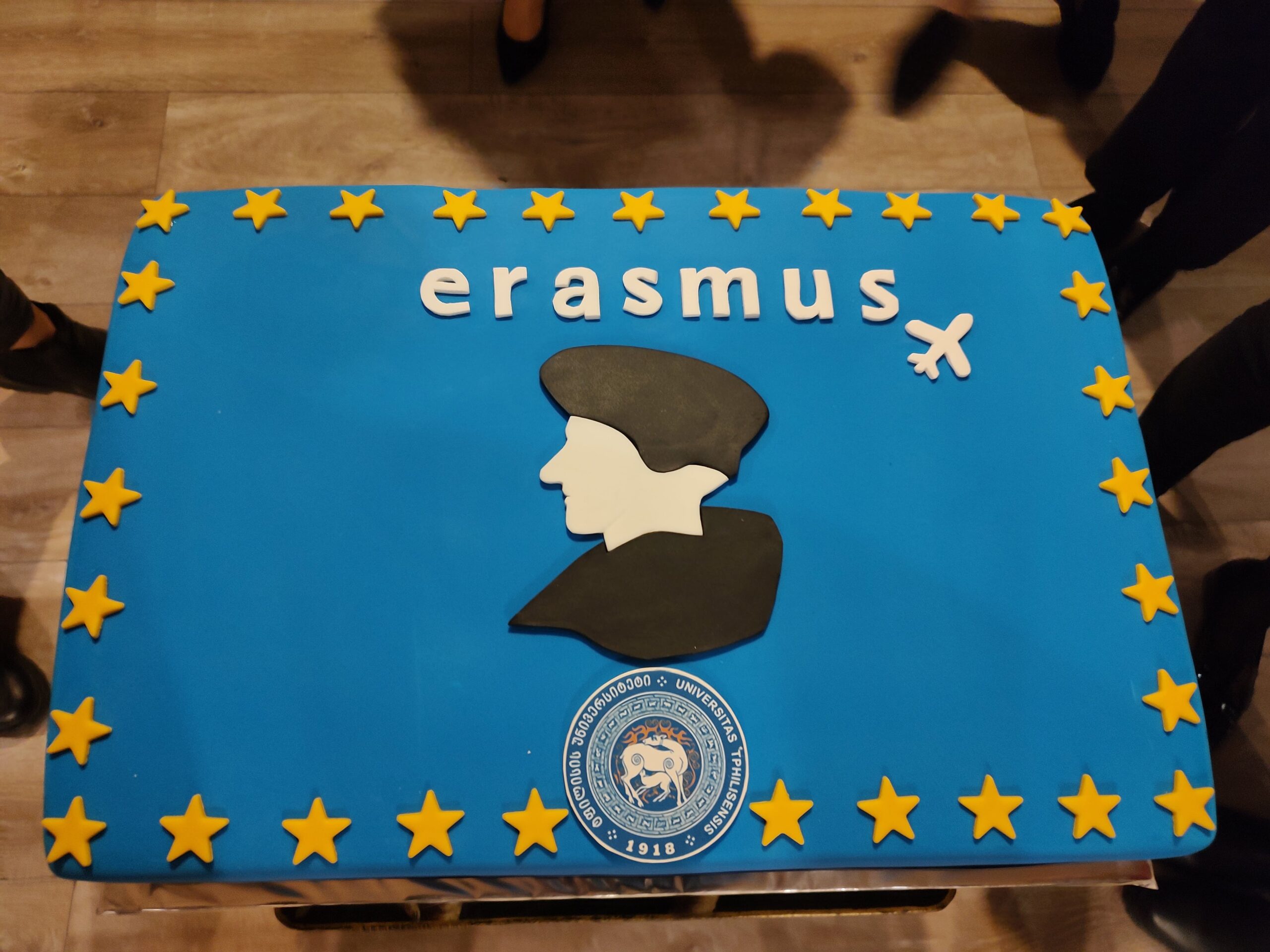#conference #publication #cooperation
In May 2021, at the College of Social and Media Culture in Toruń (currently the University of Social and Media Culture in Toruń), a conference devoted to the subject of new media, entitled #visualization. Word – Image – Sound. Numerous scientists participated in the remote event. Among the speakers were experts from the College of Social and Media Culture in Toruń, the Nicolaus Copernicus University in Toruń, the Pontifical and Royal University of Saint Thomas in Manila (Philippines), St. Xavier’s College, Kolkata (India), University of Adam Mickiewicz in Poznań, the Catholic University of Lublin, Cardinal Stefan Wyszyński University in Warsaw, Scuola Superiore Carolina Albasio (Italy), Universidad Panamericana (Mexico) and the University of Rzeszów.
Thanks to the efforts of the Publishing House of the Academy of Social and Media Culture in Toruń, a book entitled Visualization in the media, science and technology has just been published, edited by Krystian Chołaszczyński PhD, Mateusz Kaleta PhD and Karolina Dziewulska-Siwek PhD. The publication contains a collection of texts on the subject of visualization used today in many areas of our lives, including new media.
In his review of the publication, prof. Paweł Sobczyk wrote:
At the same time, I am convinced that “Visualization in the media, science and technology” will become another important publication of the Academy of Social and Media Culture in Toruń, which will contribute to the development of Polish science, and above all it will serve the conscious use of modern mass (social) media.
Whereas prof. Hanna Karp wrote about the indicated publication in her review:
It is a pleasure for the undersigned to recommend a synthetic work, describing the ubiquitous modern digital technologies, currently used on all fields of our everyday life, but also in religion, science, culture, technology, and the media or modern nutrition technologies. Here we find introductory articles the use of the latest digitized techniques, starting with the great ones Boolean productions of Indian cinema, by visualizing the covid-19 statistics on Philippines and the technical aspects of deepfake technology and their impact on society, following topics asking, inter alia, questions about the network society, media civilization, virtual communication or the future of the Catholic Church, such as visualization – the end whether the beginning of evangelism, or determining the acceptance of food by reaction physiological consumers combined with the work of artificial intelligence.
In the book Visualization in the media, science and technology, we can also find a text on visualization in ERASMUS + programs and in the RIPEC project, whose authors are Lisa Lonati MA and Isabela Querci PhD from SS Carolina Albasio (Castellanza, Italy). As its authors indicate in it:
In this article the authors, which are both involved in the Erasmus plus project management, will discuss the importance of the visual identity in the European project, and in particular of the RIPEC project, a Strategic Partnership for higher education that consists of six different universities and aims to identify best practices and new solutions in the management of Erasmus in times of emergency.
Therefore, the published publication also promotes and disseminates the activities of the ERASMUS + program and the RIPEC project. It should be noted that the publication published by the Publishing House of the University of Social and Media Culture in Toruń was financed by the ERASMUS project.














I am very happy that I could take part in the preparation of this publication. The time of the coronavirus pandemic has shown very strongly how powerful new technologies (including new media) have. This confirms our belief that such conferences and publications are needed and up-to-date today. Already today, we invite you to participate in the next edition of the conference on new media and technologies, which will be held in May 2023 in Toruń (Poland). Best wishes from Poland to the entire RIPEC team.
… [Trackback]
[…] Read More to that Topic: ripec-project.eu/discussion/scientific-cooperation-in-the-age-of-a-pandemic-the-university-of-social-and-media-culture-in-torun-has-just-published-a-new-book/ […]
… [Trackback]
[…] There you can find 44130 more Information to that Topic: ripec-project.eu/discussion/scientific-cooperation-in-the-age-of-a-pandemic-the-university-of-social-and-media-culture-in-torun-has-just-published-a-new-book/ […]
… [Trackback]
[…] Read More to that Topic: ripec-project.eu/discussion/scientific-cooperation-in-the-age-of-a-pandemic-the-university-of-social-and-media-culture-in-torun-has-just-published-a-new-book/ […]
… [Trackback]
[…] There you can find 20659 more Info to that Topic: ripec-project.eu/discussion/scientific-cooperation-in-the-age-of-a-pandemic-the-university-of-social-and-media-culture-in-torun-has-just-published-a-new-book/ […]
… [Trackback]
[…] Find More on to that Topic: ripec-project.eu/discussion/scientific-cooperation-in-the-age-of-a-pandemic-the-university-of-social-and-media-culture-in-torun-has-just-published-a-new-book/ […]
… [Trackback]
[…] There you can find 1587 additional Info on that Topic: ripec-project.eu/discussion/scientific-cooperation-in-the-age-of-a-pandemic-the-university-of-social-and-media-culture-in-torun-has-just-published-a-new-book/ […]
… [Trackback]
[…] Read More to that Topic: ripec-project.eu/discussion/scientific-cooperation-in-the-age-of-a-pandemic-the-university-of-social-and-media-culture-in-torun-has-just-published-a-new-book/ […]
… [Trackback]
[…] Info on that Topic: ripec-project.eu/discussion/scientific-cooperation-in-the-age-of-a-pandemic-the-university-of-social-and-media-culture-in-torun-has-just-published-a-new-book/ […]
… [Trackback]
[…] Read More to that Topic: ripec-project.eu/discussion/scientific-cooperation-in-the-age-of-a-pandemic-the-university-of-social-and-media-culture-in-torun-has-just-published-a-new-book/ […]
… [Trackback]
[…] Find More here to that Topic: ripec-project.eu/discussion/scientific-cooperation-in-the-age-of-a-pandemic-the-university-of-social-and-media-culture-in-torun-has-just-published-a-new-book/ […]
… [Trackback]
[…] Read More here on that Topic: ripec-project.eu/discussion/scientific-cooperation-in-the-age-of-a-pandemic-the-university-of-social-and-media-culture-in-torun-has-just-published-a-new-book/ […]
… [Trackback]
[…] Read More Info here on that Topic: ripec-project.eu/discussion/scientific-cooperation-in-the-age-of-a-pandemic-the-university-of-social-and-media-culture-in-torun-has-just-published-a-new-book/ […]
… [Trackback]
[…] Here you will find 9787 additional Info on that Topic: ripec-project.eu/discussion/scientific-cooperation-in-the-age-of-a-pandemic-the-university-of-social-and-media-culture-in-torun-has-just-published-a-new-book/ […]
… [Trackback]
[…] There you will find 61018 additional Info to that Topic: ripec-project.eu/discussion/scientific-cooperation-in-the-age-of-a-pandemic-the-university-of-social-and-media-culture-in-torun-has-just-published-a-new-book/ […]
… [Trackback]
[…] There you will find 26746 additional Information on that Topic: ripec-project.eu/discussion/scientific-cooperation-in-the-age-of-a-pandemic-the-university-of-social-and-media-culture-in-torun-has-just-published-a-new-book/ […]
… [Trackback]
[…] Info on that Topic: ripec-project.eu/discussion/scientific-cooperation-in-the-age-of-a-pandemic-the-university-of-social-and-media-culture-in-torun-has-just-published-a-new-book/ […]
… [Trackback]
[…] Find More here on that Topic: ripec-project.eu/discussion/scientific-cooperation-in-the-age-of-a-pandemic-the-university-of-social-and-media-culture-in-torun-has-just-published-a-new-book/ […]
… [Trackback]
[…] Find More to that Topic: ripec-project.eu/discussion/scientific-cooperation-in-the-age-of-a-pandemic-the-university-of-social-and-media-culture-in-torun-has-just-published-a-new-book/ […]